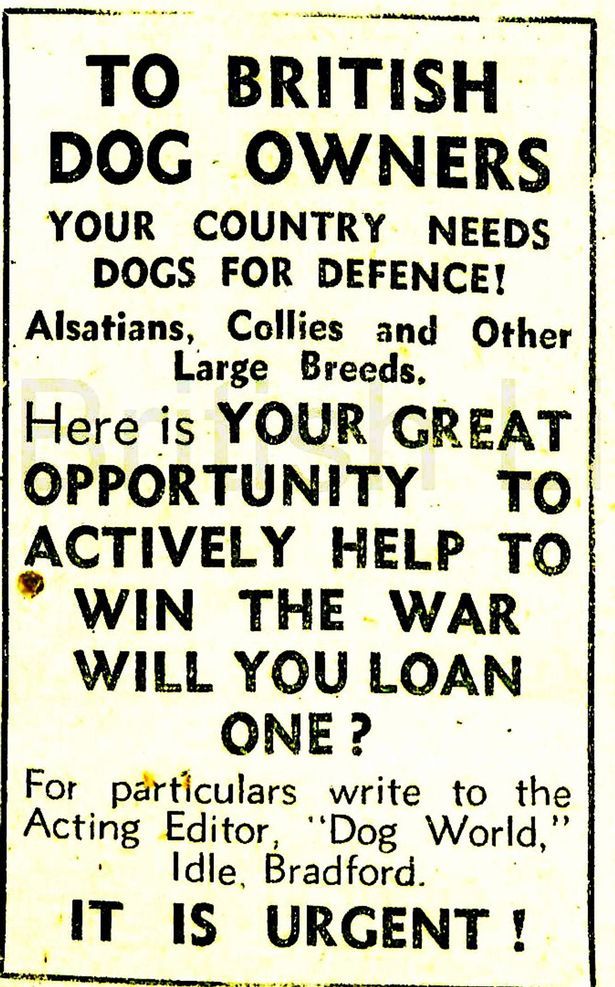Working Dog Spotlight: Military Dogs
#1 - World War II saw the first organized deployment of military dogs
Although dogs were used sparingly in previous battles and wars dating all the way back to Egypt, World War II was the first organized deployment of canine warriors.
#2 - In 1941, British advertisements began targeting local dog owners asking them to loan their dogs to fight for their country.
Would you loan your dog? About 3,300 people across the world did!
#3 - A group of civilians came together on the belief that their sled dogs could effectively serve the army in a variety of functions. Together, they formed a coalition called Dogs for Defense.
This group was created in 1941, shortly after the attack on Pearl Harbor. They would become the primary training force for sentry dogs.
The U.S. Army was involved in the development of this organization and encouraged dog owners across the country to donate their dogs for training.
#4 - The most used dog breeds were German Shepherds, Dobermans, Boxers, Bull Terriers and Labradors.
#5 - The most common jobs were guard dogs, messenger dogs, scout dogs, detection dogs, assault dogs and even parachute dogs.
The Army’s initial canine members were trained for sentry duty. The dogs were trained to alert their handlers to any strangers in their vicinity and to attack on command. Sentries were the primary use of dogs during World War II because of the worry that enemy submarines would invade.
As that threat began to diminish over time, the role of dogs in the war shifted to scouts and messenger dogs.
A plan was developed to train “assault dogs” to attack enemy soldiers without any human guidance or commands. This plan, of course, failed.
Perhaps the strangest use of dogs were the “Paradogs”. A group of dogs who were taught how to parachute and then dropped behind enemy lines.
#6 - With the German’s new landmine innovations, general bomb detection methods had become obsolete. Thus, detection dogs were created.
Although the idea seemed strong, it was not understood at the time how sharp the canine sense of smell truly is, resulting in mostly ineffective training methods for mine detection.
#7 After the war, it was discovered that dogs are actually able to pick out the chemical components within explosives.
World War II paved the way for how military dogs are used in in the modern era Now that we know more about dogs’ behavior and their acute sense of smell, we now deploy dogs in a much more effective manner.




